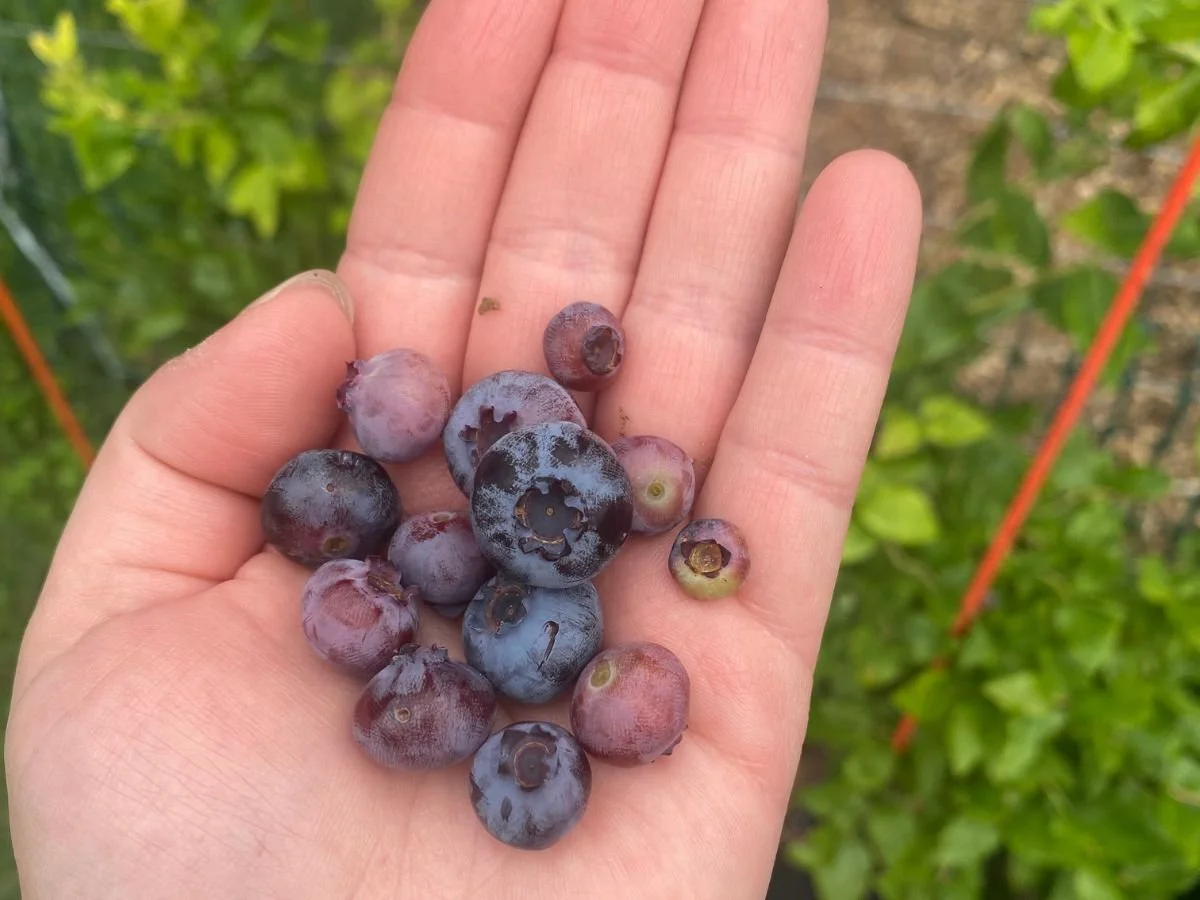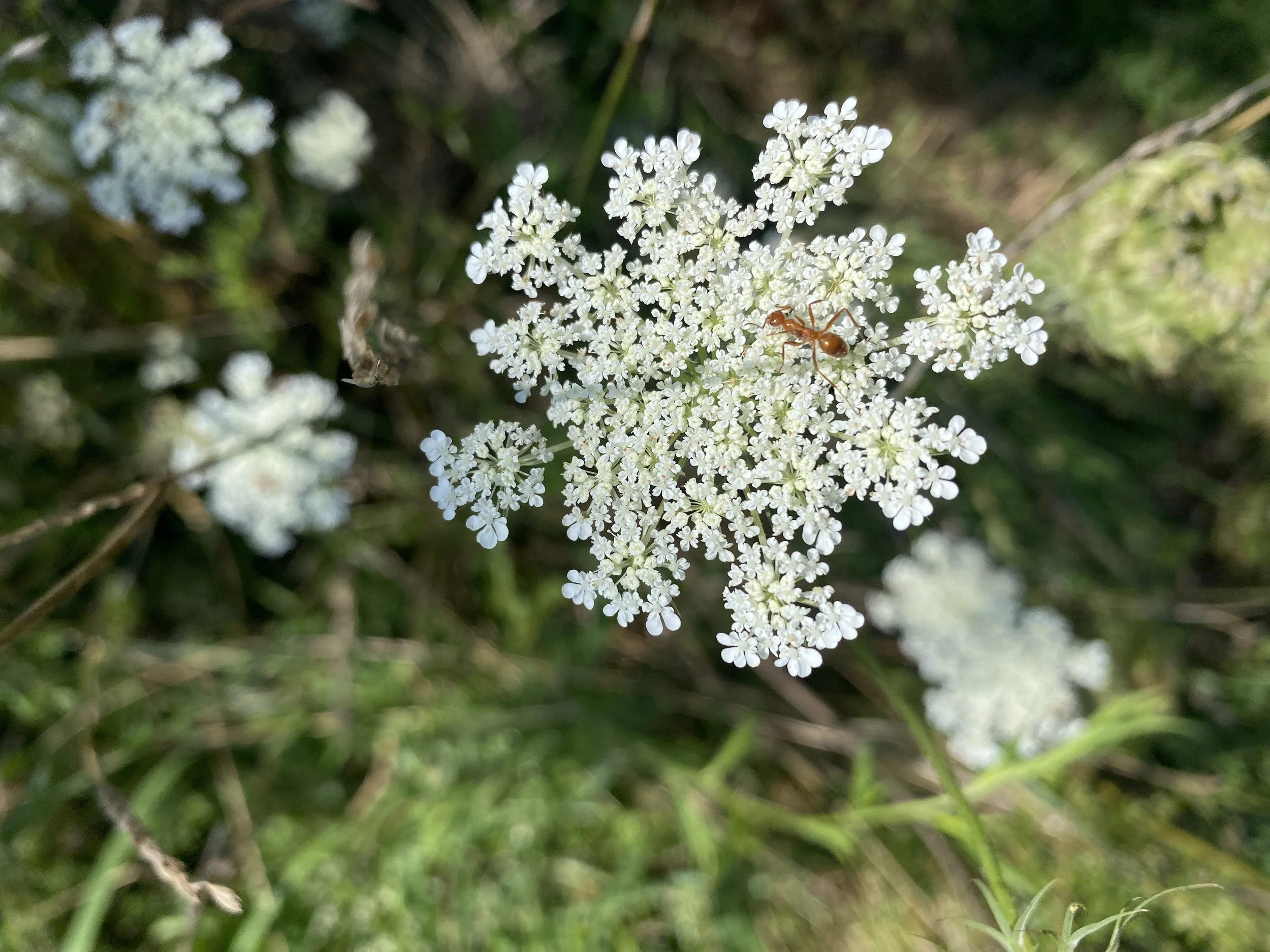7 Herbs and Flowers You Should Preserve Every Year
As each season comes to a close, we make it a tradition to preserve a handful of herbs and flowers that have become essential in our daily lives. These plants - chamomile, echinacea, lemon balm, rosemary, thyme, nasturtium, and catnip - have become staples in our home for their calming properties, culinary uses, and overall wellness benefits. From soothing teas to healing salves, these plants continue to support us long after their blooms have faded. Here's a closer look at the herbs and flowers we make sure to preserve year after year.
1. Chamomile
Chamomile is one of our favorite teas, so it was an easy choice to add to the garden. It has anti-inflammatory, antispasmodic, and relaxant effects, making it a great flower for easing anxiety and upset stomachs or supporting our sleep. We threw a few German chamomile seeds on the ground, and this flower has grown prolifically, with little support, in our zone 7 garden. It can take some time to harvest all of the small flowers throughout the season, but it’s well worth it once you compare the flavor to store-bought tea.
Drying/Storage: Put the flowers in a drying rack for a few days and then store them in a glass jar. Use this flower for tea or include it in ointments or tinctures.
2. Echinacea
Echinacea is a common flower used in tea blends that you buy from the store. It grows well in rich, sandy soil, and you can harvest both the flower petals and the leaves for tea. Echinacea is antimicrobial, anti-inflammatory, and detoxifying. Echinacea naturally self-seeds, so we started with two plants and are allowing them to self-seed until they fill the space we have.
Drying/Storage: Dry the petals and leaves in a drying rack or hang the flowers by the stem until they are fully dried. Use in tea or a tincture, which can be beneficial whenever the immune system is under-performing.
3. Lemon Balm
Lemon balm is an easy-to-grow herb. As part of the mint family, it spreads easily. We planted some in a garden bed our first year gardening and it has quickly taken over almost all of the space. Lemon balm is known for its calming properties. It has traditionally been used in teas, tinctures, and salves to reduce stress, support sleep, ease digestion, and soothe minor skin irritations.
Drying/Storage: Trim the lemon balm leaves off regularly to keep the plant maintained. Put the leaves on a plate or drying rack and store once the leaves are crispy enough to break apart.
4. Rosemary
Rosemary is a hardy, fragrant, and versatile herb. Once established, rosemary is drought-tolerant and low-maintenance, which means it keeps giving year after year with little input, making it great for both sustainability and your budget. Rosemary has a long history of medical use. It’s known to support memory, reduce inflammation, and ease stress when used in teas, tinctures, or aromatherapy.
Drying/Storage: We cut sprigs off of this herb throughout the season and use them fresh or dry them out to use in homemade breads and savory dishes. Hang them in a drying rack or by string and then store the dried leaves in a jar.
5. Thyme
Thyme is a compact, aromatic herb that is easy to grow in a small space and requires little maintenance. We dry out thyme sprigs to use in soups, roasted veggies, and breads, but it is also a great addition to our wellness routine. Traditionally, thyme has been used to support respiratory health and boost immunity. Look out for different types of thyme. One of our favorite additions has been lemon thyme, which gives a lot of lemon flavor to our soups.
Drying/Storage: Cut sprigs of thyme regularly throughout the season and use them fresh or put them on a plate or drying rack. We like to keep some full sprigs of dried thyme and also remove the leaves to use in different recipes. Thyme can be brewed into a tea or infused with oil for its antimicrobial and anti-inflammatory properties.
6. Nasturtium
Nasturtium is one of our favorite edible flowers that we grow in our garden each year. Both the leaves and flowers of this plant are edible and give a slightly peppery taste. Nasturtium is a fantastic substitute for basil in pesto recipes. It provides a nice kick for pasta dishes and can be eaten raw in salads or other fresh dishes.
Drying/Storage: Nasturtium is usually eaten fresh, but it can be preserved for long term consumption. The best way to preserve it is to blend the leaves and flowers with walnuts, olive oil, garlic, and parmesan cheese to create a peppery, light pesto sauce. We freeze the pesto in mason jars and they last for months in the freezer. You could also freeze the leaves to use in fresh cooking.
7. Catnip
We like to keep a jar of dried catnip for our cat to enjoy year-round. A small sprinkle of catnip keeps our cat entertained for a few hours.
Drying/Storage: Catnip is a member of the mint family, which means it can spread quickly - so it’s best to grow in a pot to keep it contained. To preserve it, cut several stalks and lay them out to dry on a plate or drying rack in a well-ventilated area. Once the leaves are completely dry, remove them from the stems and store them in a glass container. Catnip’s effect on cats comes from its scent, so you’ll want to crush the leaves just before offering them to your feline friend for maximum potency and cat zoomies.
Disclaimer: The information provided on this website is for educational purposes only and is not intended as medical advice. Herbal remedies can interact with medications and may not be suitable for everyone, so always consult with your medical professional before using anything for medicinal purposes.









